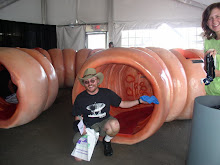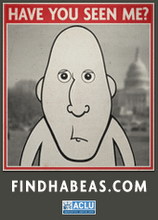The 1990s were so, so much more than grunge and the Pacific Northwest. But even among direct indie participants, very few understood the ramifications. 1990-98
Kurt Cobain’s unfortunate decision to take his own life in mid-decade
immediately propelled Nirvana into the role of defining band for the 1990s indie
era. And for many casual music fans not paying strict attention, indie was
treated as a synonym for grunge and the Pacific Northwest. That is a profound
misreading of the 1990s. The real revolution of the decade came in the
development of independent distribution, independent labels, and yes, a new and
large generation of independent artists fed by what is often called the “boomer
echo” or “baby boom 2.0.” And among those artists, it was tough to find a
unifying musical theme. Indie was about a state of mind centered on displacing
the major labels.
Michael Quercio, guitarist
for 1980s psychedelic bands The Three O’Clock and Game Theory, said that the
rise of grunge actually limited the audience for his early 1990s band Permanent
Green Light, because flannel-powered hard rock swamped the lighter sound of
jangle-pop. This tells us two important
things: First, the subgenres of indie could often work at cross-purposes to
each other. Second, a narrowly-defined indie rock market might have been even
more niche-oriented than the OG days of punk, at least in indie’s early days. The
big news in early 1991 wasn’t necessarily Nirvana (at least at the time), but
the fact that hip hop artists like LL Cool J and Beastie Boys finally were
breaking through into mainstream charts. Metal bands also were grabbing
tailwind from the unexpected success of Metallica’s Black Album. Meanwhile,
the largely irrelevant Top 40 charts were filled with the type of crooners that
defined the 1980s, as well as intelligent songwriters who should have known
better, continuing the vapid production sound of 1980s digital synthesizers
(think Susanna Hoffs’ “My Side of the Bed”).
Still, what made the first
few months of grunge so critical in defining new artists for decades to come is
that small labels and regional artists finally found a path to breaking the
stultifying power of the big labels. Sure, within 20 or 30 years the small
artist was struggling due to low streaming profitability and the high cost of
physical media production, but these factors affected newcomers and mega-stars
alike. In the early 1990s, for the first time in a decade, pop music had
second-string and third-string artists in the dugout, and many of them were
great. And the major labels never recovered from the one-two punch of indie on
the charts, followed by an Internet culture that made it impossible for the
labels to regain the amount of control they wielded in the 1980s.
In the final months of 1990,
we moved to Colorado and had a baby girl at the same time, so there was a
natural inclination to treat the world as brand new. I had to learn to balance
my listening to “grown-up” pop with doses of Raffi and Kathy Dines, but that
only taught me to widen my musical tastes. Meanwhile, by the time my daughter
was a year old, she was attending the inaugural Lollapalooza, and let it be
known that her favorite act was The Butthole Surfers. It truly was the
beginning of a new age.
Having more innovative small
artists to choose from meant there would be a certain amount of tiresome acts
that were over-hyped. We’d all rather forget the neo-hippies Rusted Root, for
example. Lemonheads also comes to mind, though Juliana Hatfield grew up to be
quite the solo artist (more so than her bandmate Evan Dando). Others drifted in
a quasi-famous haze, like Buffalo Tom and Blind Melon. For the most part,
though, the arrival of the indie machine meant that there were many more
downright decent bands to listen to, covering the gamut from Built to Spill to
Guided by Voices.
The expansion of musical
experiments also allowed a flowering of noise in its various sub-genres. There
had been a 1980s market for Coil, Nurse with Wound, and John Zorn’s various
experiments in that decade, but new labels like Siltbreeze and Road Cone provided
enthusiastic fans (even if small in number) access to bands like Harry Pussy
and Jackie-O Motherfucker. (More melodic but equally unmarketable bands like
Thinking Fellers Union Local 282 and Sun City Girls rode along in this wake.) The
development of a new market that could genuinely be called “the next
underground” was a boon to special record stores like Kim’s and Other Music in NYC,
Amoeba in San Francisco and L.A., The Quaker Goes Deaf in Chicago, and the
Newbury Comics multiple franchises in Boston. The people that frequented such
stores would often say that the hunt for unusual 45 rpm art objects or
strangely-packaged cassettes brought back the fun of early punk-rock days.
The rise of the smaller boutique record stores in the early 1990s underscored the precarious state many of the larger record or book/record chains found themselves in as the decade progressed. Tower Records, Virgin Music, and Borders Books all experienced hyper-growth in the 1990s after staying in relative health through the CD conversion of the mid-1980s. To their credit, they supported the first vinyl resurgence of the 1990s (which many latecomers forgot about, or were unaware of, as a larger vinyl resurgence took place in the 2000s). As a result, the stores managed to retain a certain credibility with snobbier music fans. But Tower in particular had an expansion rate that was not sustainable as downloads replaced CDs at decade’s end (the sight of the Tower mini-skyscraper in NYC across the street from the small and scrappy Other Music indicated the extent of the problem, though Tower’s 2006 demise was followed ten years later by the end of Other Music). By the mid-2000s, only Tower Japan, where CDs never fell out of favor, could stay alive following the global 30-year growth of the franchise. Virgin and Borders quickly followed suit into oblivion, leaving only Barnes & Noble left in the post-Covid 2020s to market books, CDs, and vinyl in brick-and-mortar stores.
In the 1990s, innovation was
bubbling down to the lowest level, and the number of new bands being formed
climbed back to late 1970s levels, yet this artistic surge happened
counter-cyclically to any political or social upheavals. In fact, the “Greed is
Good” slogan characterizing the 1980s accelerated into overdrive during
Clinton’s years – U.S. hubris at “winning” the Cold War aligned with further
acceleration of the NASDAQ stock market in the early Internet era, to give rise
to a make-money culture seemingly devoid of politics. With the exception of a
group of European artists who released a protest single in response to Desert
Storm at the start of 1991, the succeeding Clinton era was defined by American
exceptionalist hubris, and entrepreneurs getting rich on high-tech. Bands
seldom had reason to be in the forefront of social commentary, though
songwriters like Elliott Smith often turned the personal into the political.
Music fans had to be
self-motivated to really appreciate the 1990s, however. Except for an odd
showing by Toad the Wet Sprocket, Radiohead or The La’s, there was little
representation of indie on the radio charts, either Top 40 or AOR (except for
college stations). Hip-hop, however, was expanding into more experimental
veins, thanks to the likes of Digable Planets and Wu-Tang Clan – and was topping the charts while doing so. (It’s
important to point out that, while the death of Tupac Shakur spurred more
outsider hip hop, labels were simultaneously pushing “safe” R&B of the
Whitney Houston/Toni Braxton variety.)
Meanwhile, more expansive pop
and rock had to be actively sought out. Since not everyone received a mixtape
from a secret admirer, and since platforms like Pandora and Spotify were still
a decade away, TV producers would insert songs by up-and-coming indie artists
into shows like ER and Gilmore Girls, driving a fanbase interest that would have to be
satisfied by visits to record stores. The potential for downloads still awaited
broadband connections and standard compression formats for audio files (MP3 was
approved in 1995, but not widely adopted until the end of the decade).
Because the smaller
independent labels could not demand fealty from bands (and often encouraged a
bit of label-hopping), many musicians would issue music on multiple labels at
once, particularly for vinyl-only releases. The line between official studio
and “bootleg” release was blurred considerably. Sonic Youth had a series of
official studio releases and a second set of SYR live and eclectic recordings.
Guided by Voices regularly gave the nod to approved bootleg live recordings
with exceedingly small vinyl press runs. Trumans Water may have taken the
strangest approach in late 1993 with a series of “plausibly deniable”
recordings coming from different record labels. The band’s own label,
Homestead, released Godspeed the Punchline in early
1994 in both LP and CD formats. Simultaneously, three small labels issued LP-only
improvisational variants – Godspeed the Static, Godspeed the
Hemorrhage, and Godspeed the Vortex (the
latter augmented with an extended CD release later) – which were distributed
randomly, without catalog numbers, to record stores across the country, as well
as sold at merch tables at shows. The band got kudos and laughs from fans by
saying the Godspeed variations never existed.
The arrival of the Netscape
browser and web-based services allowed the first experiments to take place with
downloadable music. Aerosmith offered a free digital single, “Head First,” via
CompuServe in 1994, while Duran Duran could claim the first downloadable sale
of a single in 1997, “Electric Barbarella” (establishing the baseline price of
$0.99 for the single). But since most of
the world was still on dial-up modems, and audio compression still was not
standardized, the efforts were unwieldy novelties. Music lovers were most
likely to use the web first to check for physical product availability via a
record store web site or artist’s label site. Since secure financial
transactions were not yet available, these usually involved checking inventory
and placing the order via phone or mail. But it was a start.
Driven at least in part by
Internet self-selection, the type of pop music bifurcation that drove a wedge
between Top 40 and AOR in the 1970s created segmentation even within indie rock
sectors by mid-decade in the 1990s. There was a cluster of radio-friendly
artists who churned out regular hits, including Gin Blossoms, Blues Traveler, Folk
Implosion (though the related band Sebadoh never charted), Bush, Lisa Loeb, Live,
Soul Asylum, Sheryl Crow, Rusted Root, Blessid Union of Souls, and Matthew
Sweet. Then there was the cluster of more esoteric bands that grew out of small
labels and seemed destined to not hit chart status regardless of attempts to
polish their sounds. This involved a far larger roster of artists, including
P.J. Harvey, Cat Power, (smog)/Bill Callahan, Guided by Voices, 3 Mile Pilot,
Trumans Water, and dozens of others. Many did not try for deliberately weird
sounds (though some did), but seemed confined in advance to an underground
realm – though once in a while a specific album might pop above the noise. But
just as the big-seller pop audience could get lost in its own ignorance of the
wider world, fans of the broader underground often displayed indie snobbery,
sometimes unwillingly. I remained ignorant of many of the more popular bands
because I simply never bothered to check out pop radio.
It also helps to remind
ourselves of the dozens of subcurrents vying for attention outside hip hop and
indie rock. Deadheads got a new lease on jam life with the arrival of many
bands of the Phish and Widespread Panic Ilk. Spaceage bachelor pad life got its
second instantiation after the 1950s through the revival of bossa nova culture.
EDM not only hit its 1990s drum-and-bass stride, but gave new life to the
emerging shoegaze world of Stereolab, Tortoise, and Flying Saucer Attack. Young
women experimenting with nonbinary culture could gain experience with feminism
or gay/bisexual sexuality on the rocker side via Riot Grrl bands like Bikini
Kill and Team Dresch, or on the folk/funk side through Ani DiFranco and her
Righteous Babe label-mates. (It bears mentioning that a new generation of
lesbian artists would show up every 15 years or so, and the late-teen/early-20s
fans rarely had the slightest notion that previous generations of artists
existed.) On the plus side, everyone got something to listen to, but the
obvious downside was that popular music was too fragmented to provide anything
like a unifying cultural statement. But in the midst of the Clinton era, that
did not seem too important.
Some media outlets like Spin declared in retrospect that the second half of the decade was when the indie rock bubble started to deflate. I observed something different taking place, a trend that benefited the music listener. The periods of renewal and reinvention that once took place every seven to ten years were compressed to ones every two to three years. Some bands managed to last through multiple such periods (GbV, for example, held on through reorganizations to celebrate its 40th anniversary in 2023). Artists that were experiencing a slight sophomore slump in 1996, such as Sheryl Crow, continued to reach later heights in the new millenium.
And here’s what the critics
missed: It made little sense to talk of a punk revival, an indie revival, a
nu-metal revival, a hip hop revival, when every genre was getting rebooted and
refreshed every two to three years, from the late 1990s through the 2020s. Did
the music industry have its down moments due to the advent of streaming, the
2008 financial crisis, the 2020 pandemic? No doubt. But one could choose any
year as representative of a “new punk revival,” and that might be true for
certain regions and certain subgenres. Contrary to what Spin and others might say, the unit numbers of CD sales, LP sales, concert
tickets might go up and down, but serious creative slumps did not exist in the
30 years following the birth of grunge.
In fact, the occasional
surprise epic still could emerge from the mainstream, as witnessed in 1998 by
Madonna’s turn to a more EDM-friendly dance style when she partnered with
William Orbit for her groundbreaking album Ray of Light; by the
overnight success of punky flyboys The Offspring; by Cher’s unexpected
breakthrough return to the top with the album and single Believe; and by Lauryn Hill breaking records for her first
solo work separate from Fugees, The Miseducation of Lauryn Hill (the
absence of a follow-up was a major industry story in and of itself). My own
tastes in the late 1990s, as a father of an elementary student, varied between
mega-acts at Red Rocks or small gigs with the likes of Pavement and Elephant 6
artists, in addition to taking my daughter to a date on the global Spice Girls
tour.
Copyright 2024 Loring Wirbel















No comments:
Post a Comment